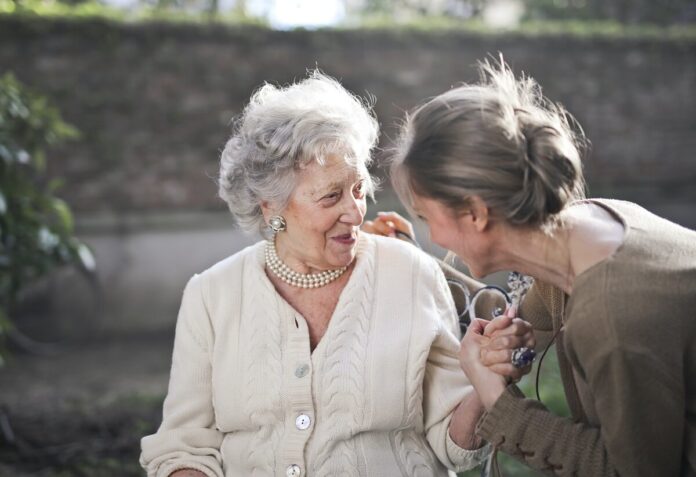As we age, our health and living needs change dramatically. Choosing the right senior living option becomes critical for maintaining comfort, safety, and optimal quality of life. With so many choices available, from independent living to skilled nursing facilities, it can be overwhelming to decide what’s best. However, taking the time to thoroughly research and compare different senior communities is one of the most important things you can do for yourself or a loved one.
With age comes an increased risk for chronic illnesses, mobility issues, and other health conditions that require assistance. Unfortunately, many seniors also face social isolation, loneliness, and even elder abuse in unsuitable living situations. This makes selecting an encouraging, supportive senior community essential. The right environment can help seniors thrive physically, mentally, and socially. Meanwhile, the wrong choice puts their health and safety at grave risk.
When touring communities, you must scrutinize staff attentiveness, activities, amenities, health services, safety protocols, and costs. Although independent setups like apartments offer more freedom, they lack crucial assistance as needs grow. Nursing facilities provide medical care but may not encourage mobility or socializing. The optimal senior living situation balances independence and support while promoting healthy, engaged living. With careful selection, seniors can enjoy their golden years in a welcoming place they’re happy to call home.
Senior Living Options
1. Skilled Nursing Facilities
For seniors with intensive medical and personal care needs, skilled nursing provides round-the-clock professional care. Registered nurses oversee care, while certified nursing assistants handle day-to-day assistance. Physical, occupational, and speech therapy are available on-site. Skilled nursing facilities provide vital care but have potential drawbacks. Quality varies greatly, and activities may be lacking. Sadly, instances of abuse or negligence can occur, making the selection process critical. If concerns arise, families should consider consulting nursing home abuse attorneys to ensure that their loved ones’ rights are protected.
2. Assisted Living Facilities
For seniors who require some support with daily activities, assisted living bridges the gap between independent living and nursing homes. Licensed staff provides services like medication management, bathing, dressing, laundry, and housekeeping. Dining halls, social activities, transportation, and 24-hour security are also standard. Assisted living communities encourage independence while providing just the right level of support. Different floor plans suit varying needs and budgets. However, these facilities are not equipped for intensive medical care.
3. Memory Care Units
Seniors with Alzheimer’s, dementia, and other memory-impairing conditions require specialized care. Memory care units provide a safe, engaging environment and tailored activities to preserve the quality of life. Specially trained staff assists with bathing, dressing, meals, and medication on a 24/7 basis. Building layouts and routines are designed to accommodate disorientation. Memory care units also strive to keep residents active and socially engaged. This specialized support allows families some peace of mind.
4. Continuing Care Retirement Communities (CCRCs)
CCRCs offer a full spectrum of senior living on one campus. Options typically include assisted living, independent living, skilled nursing, and residential care. Residents can transition between levels of care as needs evolve, allowing them to age in peace. However, large entry fees and monthly costs make them a major financial commitment. Long waitlists are also common.
5. Active Adult Retirement Communities
Active adult communities cater to independent seniors seeking an engaged lifestyle. These neighborhoods or high-rise buildings house residents aged 55 and up. Homes are designed for accessibility, with single-floor living and walk-in showers. Low-maintenance exteriors and lawn care reduce upkeep. Social clubs, fitness centers, pools, and planned activities encourage residents to stay active. With on-site amenities and peers nearby, active adult communities are ideal for seniors who are still able to live independently.
6. Board and Care Homes
Board and care homes offer housing, meals, and assistance with daily living for small groups of seniors. These for-profit homes provide more individualized care than large assisted living facilities. With just a few residents, staff can tend closely to each senior’s needs. However, oversight varies greatly since board and care homes are less regulated. It’s important to thoroughly research each facility’s licensing, staffing, and safety record.
7. Senior Cohousing
For independent seniors seeking a collaborative community, cohousing fosters meaningful relationships. Private, self-contained residences cluster around shared community space. Neighbors interact frequently and make decisions collectively. Daily meals and activities together strengthen social ties. Members also share resources and support one another, creating an extended family. However, professional medical assistance is not provided. The cooperative setup sustains wellness through social engagement.
8. Adult Foster Care Homes
Adult foster care homes offer family-style care in a residential setting. Typically six or fewer seniors live together and are cared for by live-in caretakers. With a small number of residents, caretakers can provide attentive care and encouragement. Daily assistance, home-cooked meals, medication management, and monitoring are usually provided. Adult foster homes mimic a nurturing family environment.
Read Also: Blood Donation Camp on World Thalassemia Day
9. Independent Living Communities
Independent living communities provide fully equipped apartments or condos for active seniors. These communities typically offer amenities like housekeeping, dining halls, fitness centers, pools, and social activities. Support services such as transportation, laundry, and social work may also be available. Independent living allows seniors to maintain privacy and freedom while enjoying community perks.
10. Home Care Services
Many seniors wish to remain at home as long as possible. Home care services allow this while providing the needed support. Home health aides assist with household chores, meals, bathing, medication reminders, and transportation. Skilled nurses can also provide wound care, injections, and other medical care in-home. Physical therapists and other specialists make house calls as well. Home care is ideal for seniors who require assistance but are notready for senior living. It can also supplement care after a hospital stay.
Conclusion
Selecting the ideal senior living situation is crucial for maintaining health, safety, and quality of life. From active communities to skilled nursing, today’s seniors have more options than ever. But while choice is positive, it also requires thorough research. Prioritizing the senior’s needs and preferences is key to finding the optimal balance of independence and support. With careful consideration of all factors, seniors can transition smoothly to a community where they can truly thrive. The right senior living option provides far more than just a place to live. It offers comfort, encouragement, engagement, and assistance to foster long-term well-being.
It’s also worth mentioning that although senior care services are a good option for keeping your loved one’s health in good condition, regular checkups with doctors are still important. For one, since our teeth deteriorate naturally as we grow old, you should start looking for a dentist in Shrewsbury MA, or one near you, to keep your senior’s dental situation healthy.





































